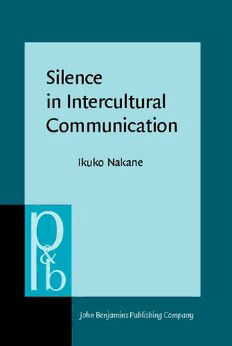
Silence in Intercultural Communication: Perceptions and Performance PDF
257 Pages·2007·1.214 MB·English
Most books are stored in the elastic cloud where traffic is expensive. For this reason, we have a limit on daily download.
Preview Silence in Intercultural Communication: Perceptions and Performance
Description:
How and why is silence used interculturally? Approaching the phenomenon of silence from multiple perspectives, this book shows how silence is used, perceived and at times misinterpreted in intercultural communication. Using a model of key aspects of silence in communication — linguistic, cognitive and sociopsychological — and fundamental levels of social organization — individual, situational and sociocultural — the book explores the intricate relationship between perceptions and performance of silence in interaction involving Japanese and Australian participants. Through a combination of macro- and micro-ethnographic analyses of university seminar interactions, the stereotypes of the ‘silent East’ is reconsidered, and the tension between local and sociocultural perspectives of intercultural communication is addressed. The book has relevance to researchers and students in intercultural pragmatics, discourse analysis and applied linguistics.
See more
The list of books you might like
Most books are stored in the elastic cloud where traffic is expensive. For this reason, we have a limit on daily download.
